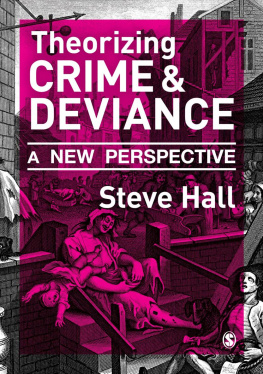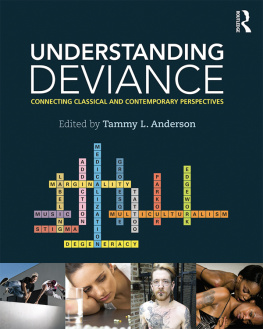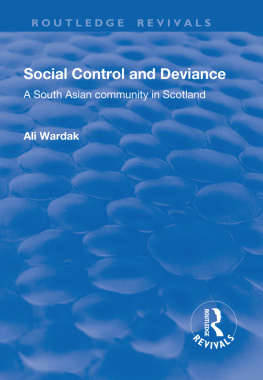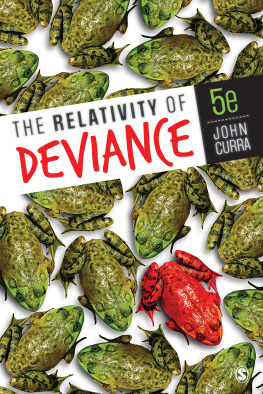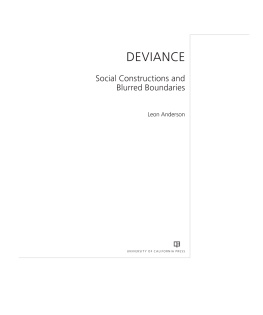
New Perspectives on Sportand Deviance
The everyday makeup of contemporary sport is increasingly characterised by a perceived explosion of deviance violence, drug taking, racism, homophobia, misogyny, corruption, excess associated with sport stars, spectators and institutions as represented by the mass media. Whereas once these behaviours may have been subject to the moral judgements of authority, in the face of dramatic socio-cultural change they become more a matter of populist consumer gaze.
In addressing these developments the book provides a new and insightful approach towards the study of deviance in the realm of sport, including:
- a critique of the sociology of sport and deviance
- an exploration of consumptive deviance as the concept that best describes rule breaking in contemporary social formations
- a re-imagining of deviance through the metaphor of performativity
- an examination of the uses of the categorisation of deviance for the forces of power and social control
New Perspectives on Sport and Deviance awakens the sociology of sport to the possibilities of re-imagining deviance and in so doing offers a compelling defence of its title. It will appeal both to academics and students of sport, sociology and cultural studies.
Tony Blackshaw is a Senior Lecturer in Social and Cultural Studies in Sport at Sheffield Hallam University. Tim Crabbe is a Reader in Social and Cultural Studies in Sport at Sheffield Hallam University.
New Perspectives on Sport andDeviance
Consumption, performativity and social control
Tony Blackshaw and Tim Crabbe
First published 2004
by Routledge
2 Park Square, Milton Park, Abingdon, Oxfordshire OX14 4RN
Simultaneously published in the USA and Canada
by Routledge
29 West 35th Street, New York, NY 10001
Routledge is an imprint of the Taylor & Francis Group
This edition published in the Taylor & Francis e-Library, 2004.
2004 Tony Blackshaw and Tim Crabbe
All rights reserved. No part of this book may be reprinted or reproduced or utilised in any form or by any electronic, mechanical, or other means, now known or hereafter invented, including photocopying and recording, or in any information storage or retrieval system, without permission in writing from the publishers.
Every effort has been made to ensure that the advice and information in this book is true and accurate at the time of going to press. However, neither the publisher nor the authors can accept any legal responsibility or liability for any errors or omissions that may be made. In the case of drug administration, any medical procedure or the use of technical equipment mentioned within this book, you are strongly advised to consult the manufacturers guidelines.
British Library Cataloguing in Publication Data
A catalogue record for this book is available from the British Library
Library of Congress Cataloging in Publication Data
A catalog record for this book has been requested
ISBN 0-203-50827-0 Master e-book ISBN
ISBN 0-203-57174-6 (Adobe eReader Format)
ISBN 0-415-28884-3 (hbk)
ISBN 0-415-28885-1 (pbk)
For Fiona, Louis, Nick, Sarah and Siobhan
Preface
It is more than four years since the initial idea for this book was conceived. We found ourselves in the middle of writing the material for a new course on sport and deviance with little published help to go on. For the reader, this situation might seem more than a little strange because sociologys enchantment with deviance is of course time-honoured; it is a field of academic study books, journals and conferences that has always received a good deal of attention by sociologists, chiefly because of the juicy disposition of the topic area. The difficulty was that although a large amount of literature was there, our preparation was hindered because what there was available paid little attention to sport. This problem was exacerbated by the fact that the theories and concepts available didnt always seem to work very well for explaining the world of sport we wanted to explore that is the activities, players, institutions and audiences who are both at once haunted and fascinated by deviance. This sense of a lack led us to decide that we really had to develop some of our own theories and concepts in order to add something to the impressive body of work on the sociology of deviance already established, but in a way that would serve as a critical toolkit for other academics and students who are specifically interested in deviance and sport. This book is the published outcome of the work which came as a result of that decision.
This book is then a sociological analysis of the relationship between sport and deviance. However, the book is not about deviance as it is often perceived in the sociology of sport literature, where all too often analyses are sullied by the lingering shadow of structure functionalism, Today we live in a world where much of the behaviour we once called deviance in sport is not merely functional or dysfunctional, it is by definition necessarily and inevitably consumptive and performative so much of a roller-coaster ride that not only do you not know whether it is the sport itself or the spectacle of deviance that is the main attraction, but also whether or not the deviance being played out is real or illusory. This is the case because much of the time deviant behaviours in sport today manifest themselves less the works of monsters, or statements of deviant identities, than instead ways in which individuals choose to accessorise themselves.
For all these shape-shifting changes we acknowledge that the relationship between power, knowledge and social control should continue to inform the major thrust of contemporary sociologising about deviance in sport. With this in mind this book is both at once a conventional sociology that deals with deviance in the form of the ritualised rule-breaking activities, such as football violence, to the more abhorrent forms of crime against the vulnerable, such as sexual abuse. It is also a sociology that pays respect to the ordinary and the overlooked what Richard Rorty has described as the voices from the far off and in doing so it challenges its readers to imagine themselves as the deviant other in order to better understand the lived reality of that other. Indeed, by dramatising the harsh realities involved in the process of identifying the relations between deviance, power, knowledge and social control, this book will attempt to involve the reader by being confrontational a compelling challenge in itself.
If this book can be read on the one hand as a conventional sociological account, it recognises too that just as the world of sport and deviance has changed, the usefulness of some of the still dominant theories and concepts in the sociology of sport have deteriorated to such an extent that they no longer work as well as they once did. It is simply too often the case that orthodox sociology of sport is over-preoccupied with explaining, accounting for and providing political solutions for deviance as the negative binary opposition of conformity in sport. Indeed, it is as if in relation to understanding deviance in sport, sociology too often merely rolls out some old footage of theory from the past, whence all its old underground and conceptual tricks are reprised: the repeat footage with different soundtracks, new ideas that once trembled on the cusp of unintelligibility, but which now represent nothing more than paeans to a worn-out sociological hegemony. It is the contention of this book that in attempting to understand and explain deviance in sport, sociology has become a bit like an ageing boxer who still knows the right punches and combinations, but cant seem to string them together with any sense of purpose or direction and as a consequence its analyses tend to be more illusion than hit.


